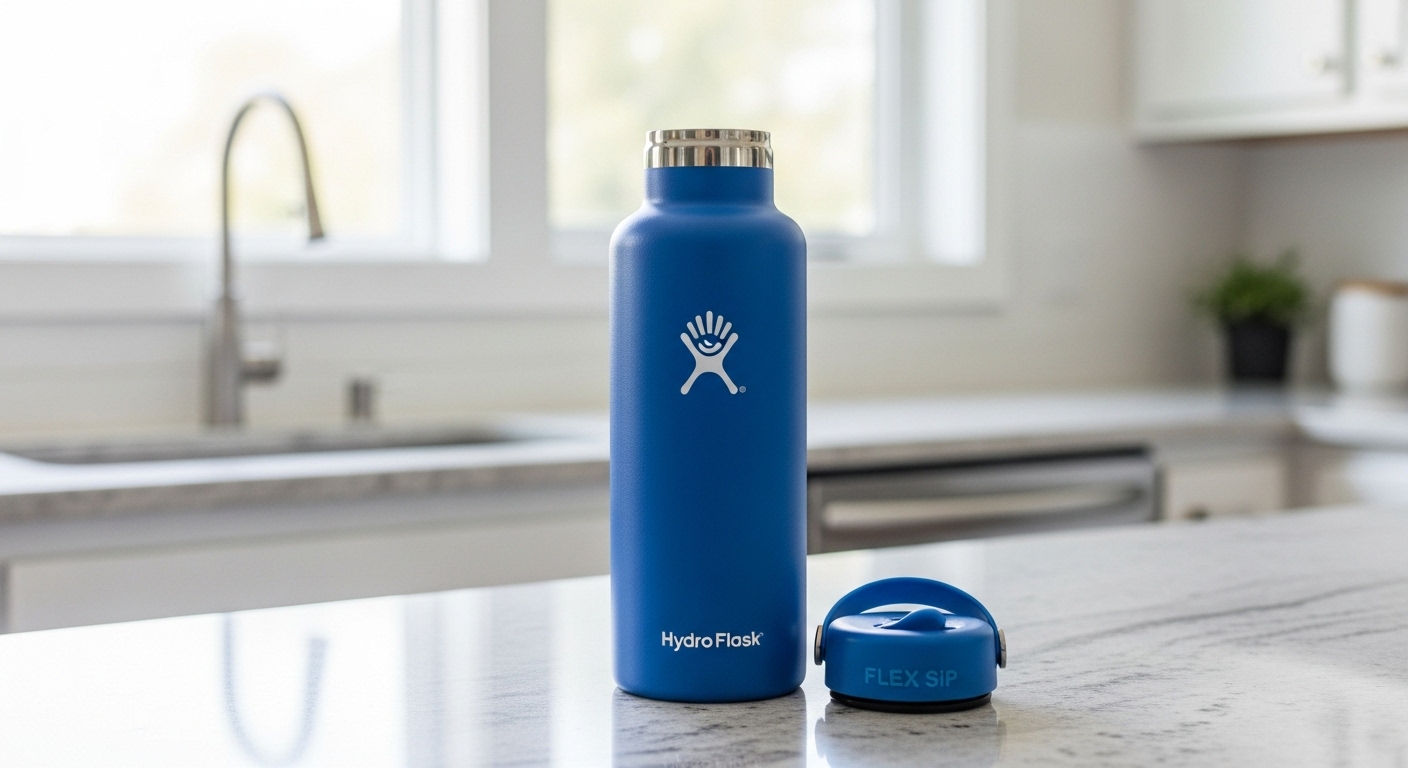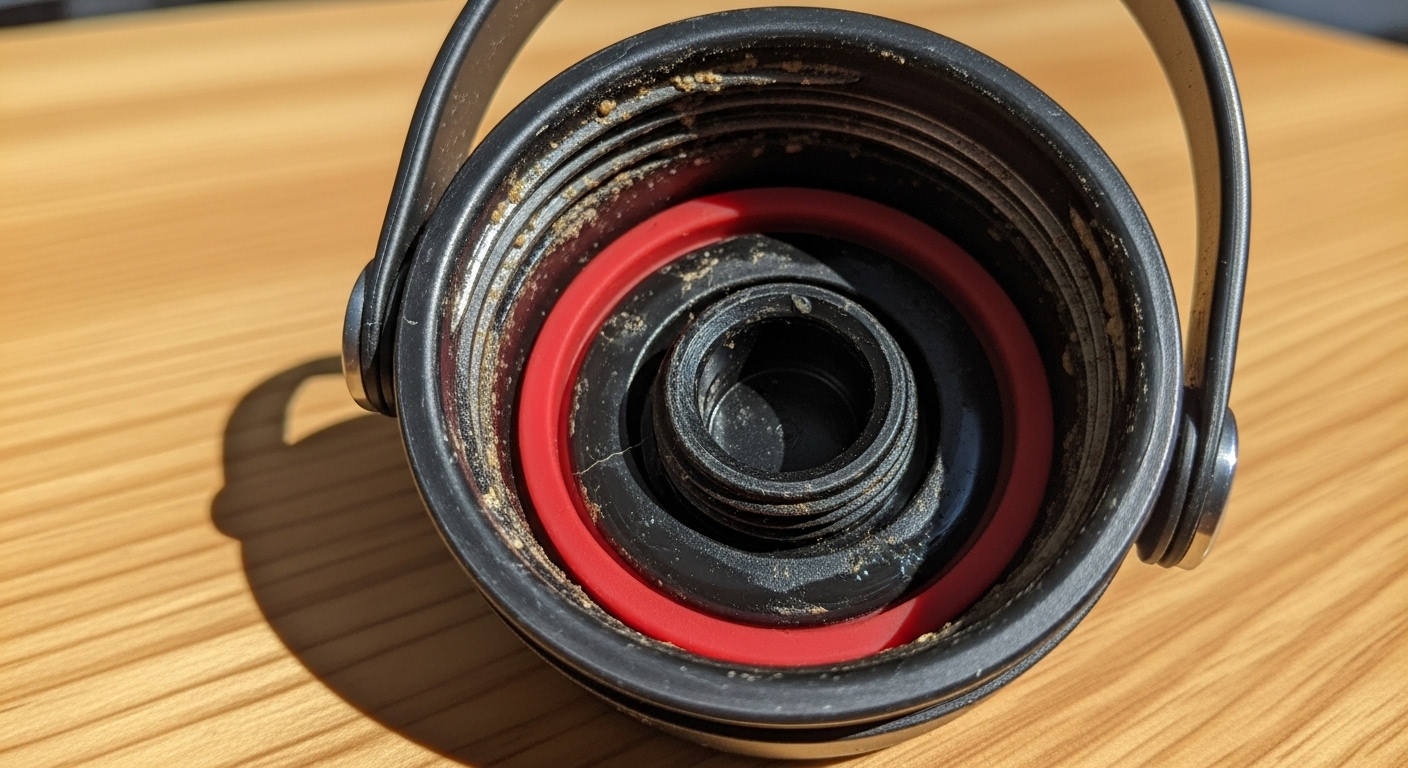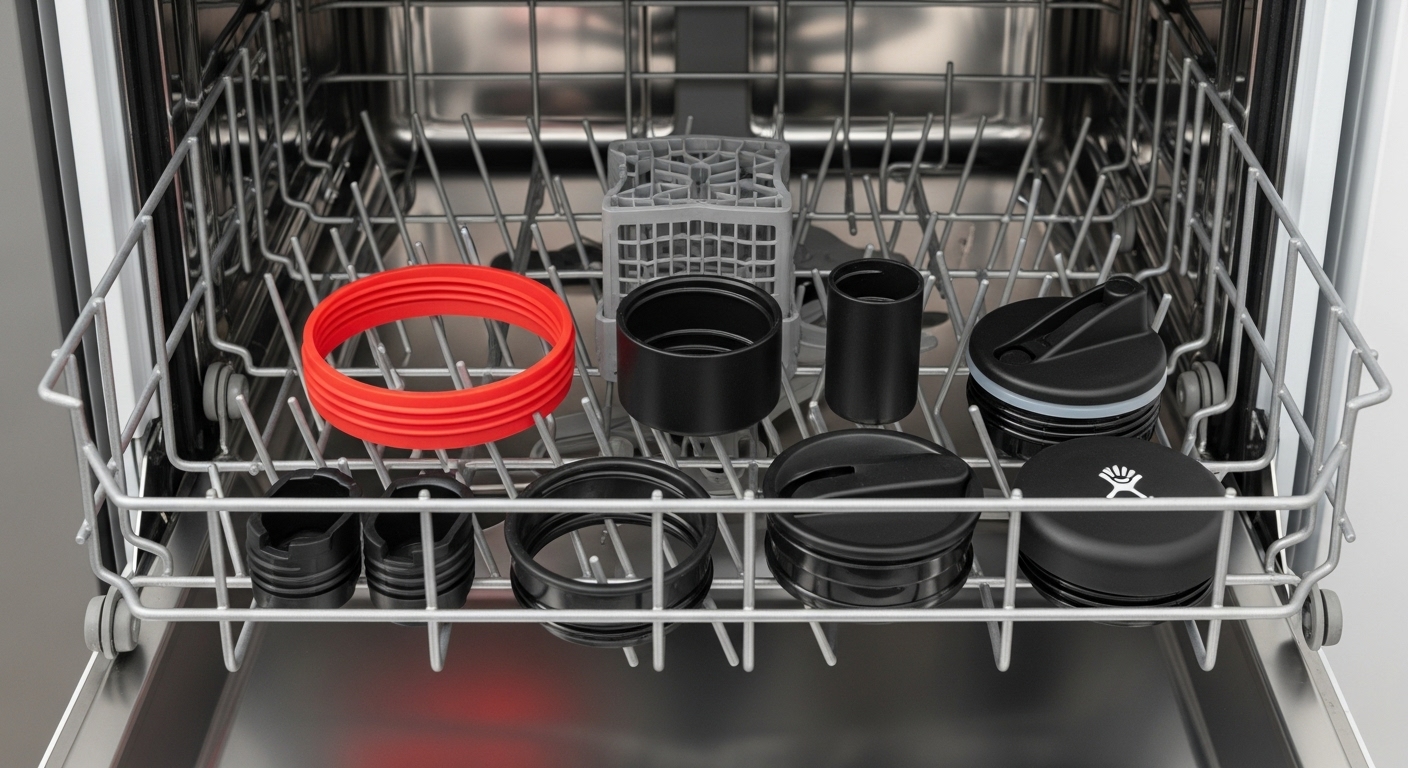
A dirty lid can ruin a great bottle. Here’s how I keep my Flex Sip lid spotless and fresh.
Disassemble and clean your Flex Sip lid with warm, soapy water using small brushes. Dry completely before reassembly to prevent mold and odors.
Follow this easy guide to keep your Hydro Flask lid clean, safe, and odor-free.
Why Is Regular Cleaning Important for Your Flex Sip Lid?
I always clean my Flex Sip lid because it has more parts than you’d think.
Cleaning removes residue and bacteria from seals and hidden spots1 to prevent odors and keep your drink safe.

Neglecting it even once can lead to mold growth inside the silicone seal or under the lid components.
How to Disassemble Your Flex Sip Lid for Thorough Cleaning
Disassembly is simple with practice. I do it weekly.
Twist the lid pieces apart and remove the red silicone seal.)2 to clean every nook and cranny.
Step-by-Step
- Start with the lid in the open position.
- Twist the top part clockwise to close, then keep twisting past closed to release it.
- Remove the red silicone seal from the underside.
- Flip the lid and twist the bottom part counterclockwise to remove.
Now you have all pieces separated and ready to wash.
What Are the Best Cleaning Methods and Tools for the Flex Sip Lid?
I use gentle tools and soap—no harsh chemicals.
Wash parts with warm water, mild dish soap, and soft brushes to scrub seals and grooves3.
My Go-To Cleaning Tools
- Soft sponge or cloth
- Straw brush or sippy cup brush
- Warm soapy water (no bleach)
- Toothpick for removing trapped debris
Avoid metal brushes that could damage silicone or plastic.
Can You Put the Flex Sip Lid in the Dishwasher?
Sometimes I use the dishwasher for convenience, but handwashing is safer.
Yes, all lid parts are top-rack dishwasher safe4, but hand washing preserves seal life.

Dishwashers are handy for busy days, but the silicone can degrade faster over time with repeated heat exposure.
"If you love your lid, hand wash it—your seals will last longer."
How to Clean Hard-to-Reach Areas and Silicone Seals
These are the places where smells hide. I never skip this part.
Soak seals in warm soapy water and use a small brush to scrub grooves and tight spots5.
Tips for Deep Cleaning
- Bend a straw brush to fit inside corners.
- Use a toothpick to gently dislodge hidden grime.
- Rinse thoroughly to remove all soap.
Let the silicone air dry completely before reassembly.
How to Reassemble Your Flex Sip Lid Correctly After Cleaning
Reassembly only takes a minute—and it's easier than it looks.
Align parts correctly and press the silicone seal firmly into place before locking pieces back together.
Step-by-Step
- Twist the bottom piece back on clockwise until tight.
- Fit the red seal with the text side up—press firmly into place.
- Snap the top piece back in and twist until it clicks shut.
You’re now ready to reattach it to your bottle.
Tips to Maintain Your Flex Sip Lid and Prevent Odors or Mold
I follow these tips to avoid ever having to deal with smelly lids.
Clean frequently, dry thoroughly, and store with the lid open to keep your bottle fresh.

Maintenance Habits
- Wash after every use if you drink coffee, tea, or juice.
- Deep clean weekly with full disassembly.
- Air dry parts with the lid off.
- Replace the silicone seal if it feels cracked or loose.
Small habits make a big difference in cleanliness.
Conclusion
Disassemble, clean with gentle tools, and dry well—your Flex Sip lid will stay fresh and last longer.
FAQs
How often should I clean the Flex Sip lid?
Daily if using with anything besides water, or weekly at minimum.
Can I use bleach or strong detergents?
No, they can degrade seals and affect your health.
Is the silicone seal replaceable?
Yes, Hydro Flask sells replacement parts.
How do I know if I reassembled it correctly?
If it twists open smoothly and doesn’t leak, it’s correct.
What if the lid starts smelling bad again?
Do a deep clean with soaking, scrubbing, and full drying.
Footnotes:
-
Bacteria and odors often build up in the grooves of reusable lids ↩
-
The silicone seal traps moisture and must be removed to clean thoroughly ↩
-
Small brushes clean inside tight crevices better than sponges ↩
-
Dishwasher cleaning is possible but can shorten silicone lifespan ↩
-
Use a straw brush or pipe cleaner for hidden buildup ↩

